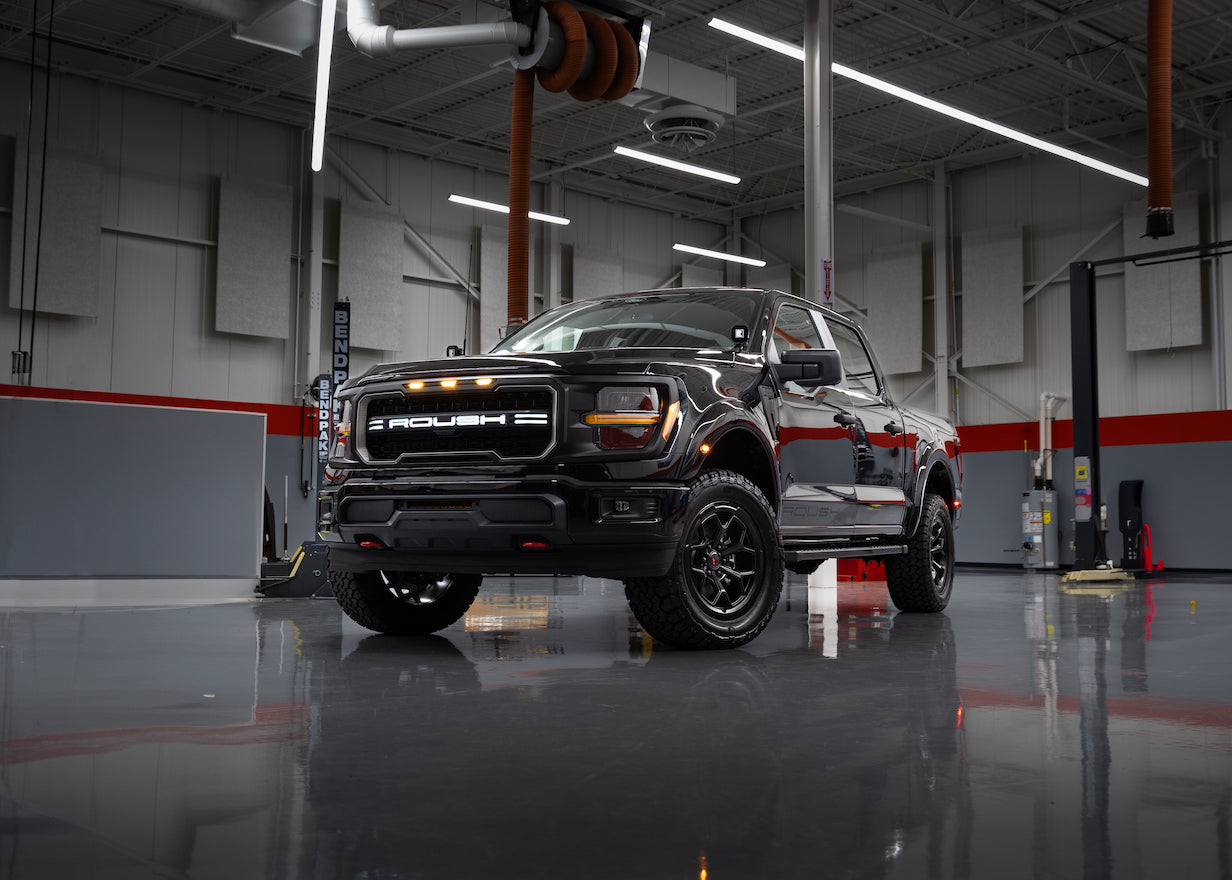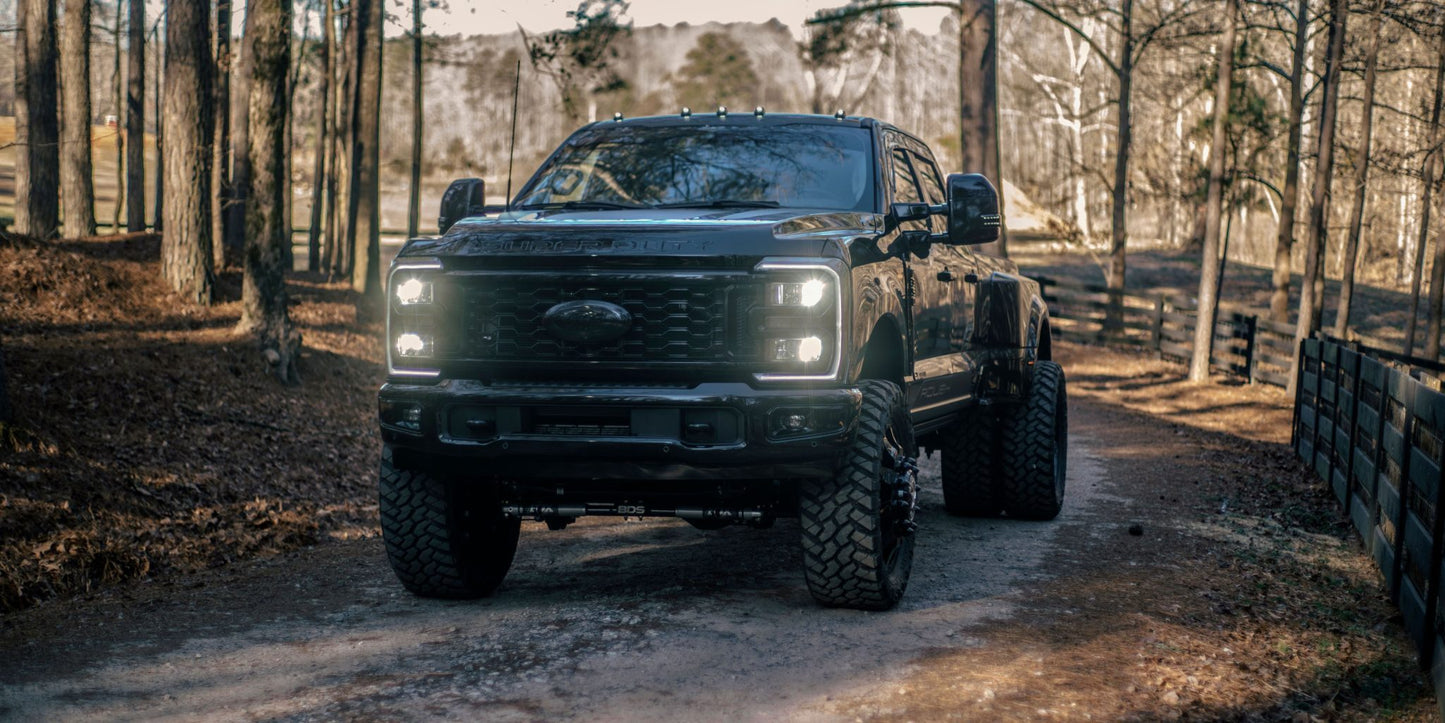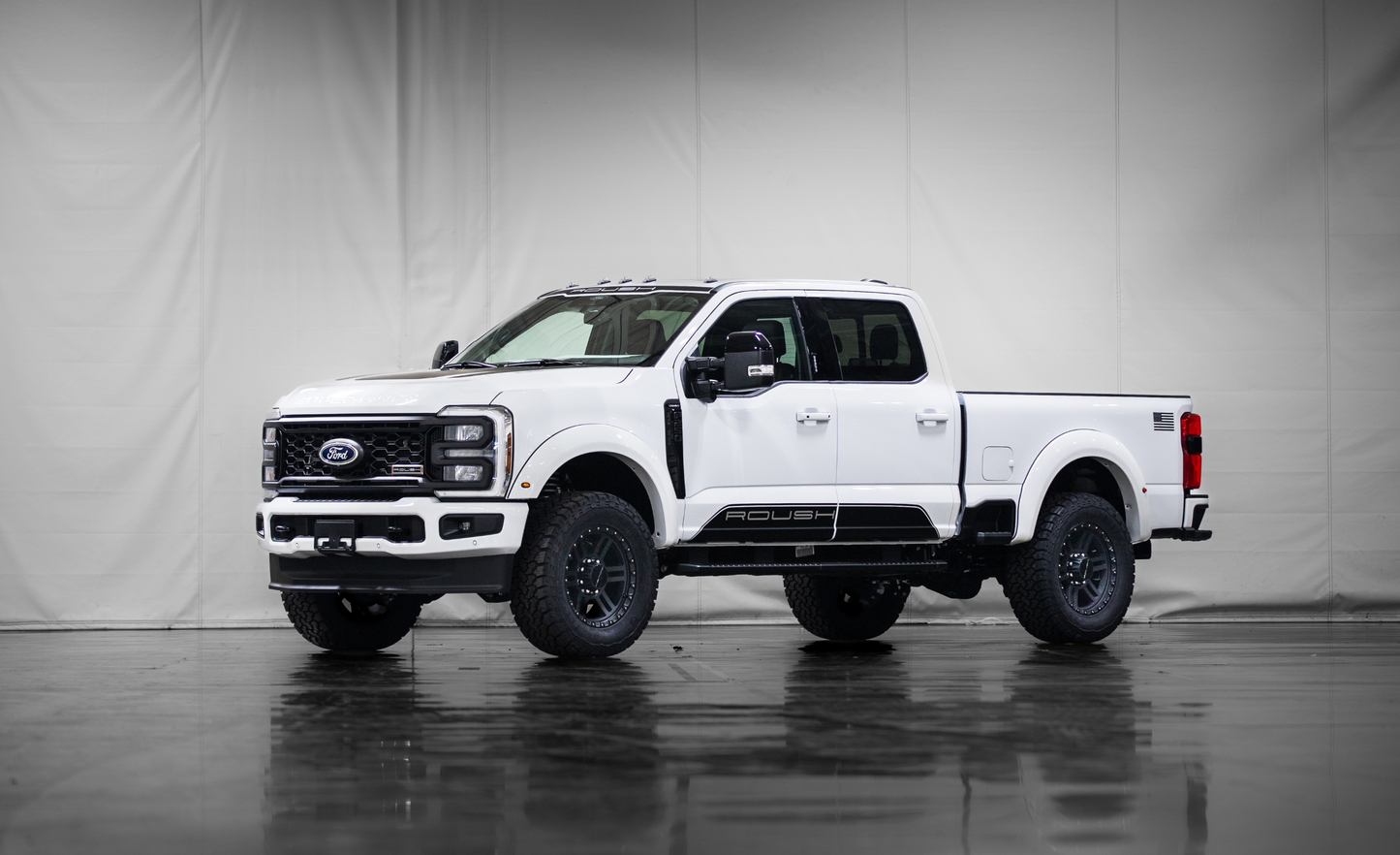2024 ROUSH F-150: 20 YEARS OF TRUCK PERFORMANCE
Introducing the 2024 Roush F-150, the perfect fusion of bold design, aggressive styling and high-performance upgrades. Available in XLT, STX, and Lariat trim levels with eight distinct color options, the all-new Roush F-150 showcases the iconic Roush aesthetic inside and out and is engineered to dominate like never before. Aggressive New Look The bold look of the 2024 Roush F-150 is highlighted by an all new high-flow grille complete with unique Roush integrated illumination. The additional off-road light bar, and front and rear puddle lighting help to give the truck a dominant look especially in low light environments. With full...
Brantley Gilberts One of a kind F-350 Dually
As a proven industry leader in automotive performance, our team is always looking for new opportunities to push our limits and we’re thrilled to announce our latest collaboration with country music star Brantley Gilbert, the one-of-a-kind F-350 Dually farm truck! Our partnership with Brantley has been revving steadily since 2021, and when he said he was in the market for a unique American-made farm truck to mark the kickoff of his Off The Rails 2024 concert tour, we jumped at the opportunity to flex our muscles. The aim was to utilize our performance expertise, and partner with some of the...
YDKJ Episode 3 | The Statute of Limitations
Buckle up for episode 3 of the You Don’t Know Jack Podcast! In this episode, The Statute of Limitations, we sit down with Jim Kemp and Ron Sharp, two seasoned members of the Roush Performance Engine Group, to swap shop stories and learn more from the gear heads at the true core of Roush Performance. With over 40 years of combined experience working on Roush engines, Jim and Ron have a incredible wealth of engineering knowledge, and know exactly what makes Roush Engines the powerhouse we’ve all come to know and love. They take a deep dive into their past...
2024 Roush Super Duty: A Fusion of Power and Capability
The 2024 Roush Super Duty stands as a testament to Roush Performance's dedication to engineering excellence, blending raw power with refined style. Whether it's for work or play, the Roush Super Duty promises to deliver an unparalleled driving experience, making every journey memorable.
Categories




